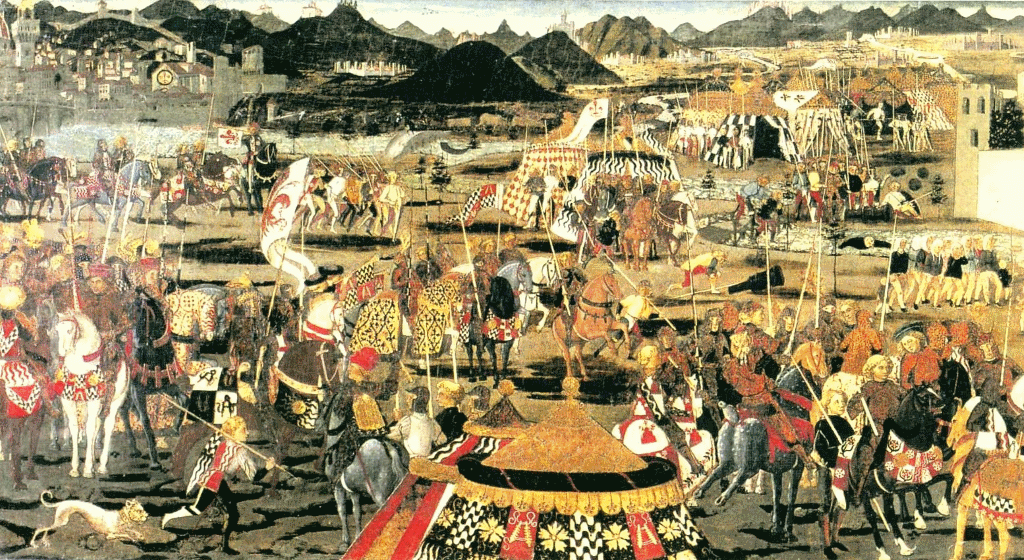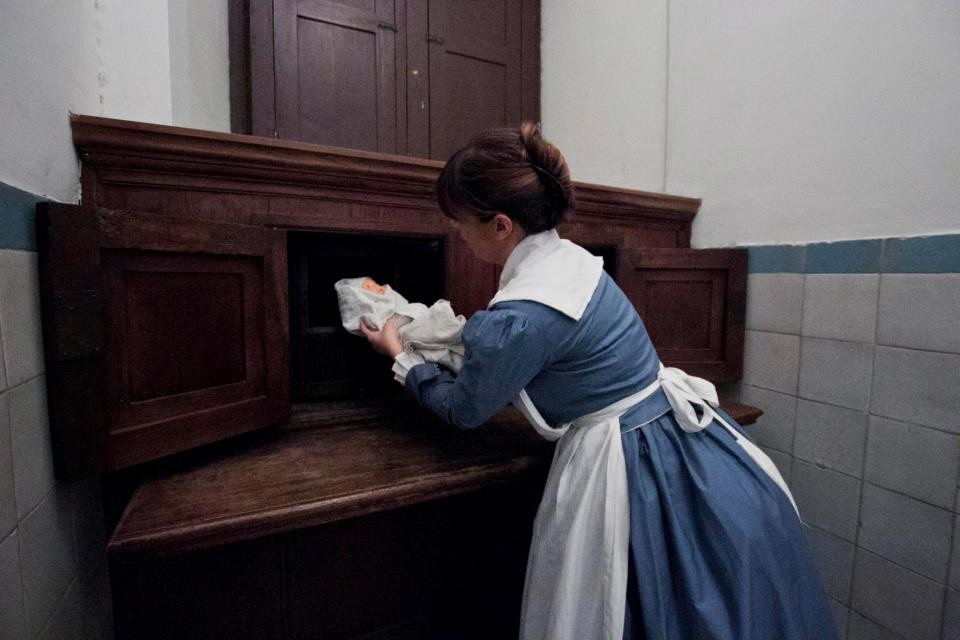Italian Heraldry, Nobility and Genealogy
Very few works have been published in English on the topics of Italian heraldry, nobility and onomatology as these relate to genealogy. Yet all three fields depend upon genealogical research. This concise presentation is not intended as a historical treatise, but rather as a simple guide for those interested in these subjects.
In common parlance, heraldry (Italian araldica) refers to the study of coats of arms. Historically, the term referred to the functions of heralds, royal court officers responsible for maintaining records of coats of arms and titles of nobility. Although such officers are still attached to royal households in the United Kingdom and Spain, the Italian monarchy was abolished in 1946. Titles of nobility and coats of arms are not recognized by the government of the Italian government of the Italian Republic, but neither is their use illegal. A few private organizations in Italy recognize nobiliary titles, the Corpo della Nobilta Italiana and the Sovereign Military Order of Malta being the best known today. (such recognition requires extensive genealogical proof of patrilineal nobility.)
In the middle of the twelfth century, during the Norman rule of much of Italy, coats of arms developed as distinctive insigna painted on the shields of knights and other nobleman. In combat, friend and foe could identify the fully armored knight, whose face was concealed by a helmet, according to the colorful design on his decorated shield. The same design appeared on his surcoat - hence the term "coat of arms." With time, the right to use certain (blazons), as well as feudal titles (i.e. count, baron, etc.), passed from father to son. Since these insigna and titles are incorporeal property of particular families, it is oblivious that unrelated families which by mere coincidence share their surnames (whether Ferrar, Rosso, Smith or Jones) cannot claim these coats of arms or titles of nobility as their own. To do so would like Mr. Johnson of Wales claiming the estate of the late Mr. Johnson of New York simply because he happens to have the same surname.
The hereditary nature of coats of arms and titles of nobility is readily apparent if their historical development is considered. So closely linked is heraldry to genealogy that the Italian word for coat of arms, stemma is the Latin for family tree. In most countries, including Italy, a coat of arms is an indication of nobility (i.e. hereditary aristocracy). Genealogical research is the only means of demonstrating this.
Unfortunately, there exist in Italy and elsewhere various firms, some of which conduct genealogical research, that have deceived thousands of clients into believing themselves to be in genuine possession of coats of arms or even titles of nobility. To bolster the credibility of such fraud, these agencies , including two well known genealogical institutes in Florence, cite historical sources and sometimes attach familial lineages to their wares. Replete with ornate seals, these seemingly "official" documents provide the customer with little more than an expensive fantasy. The majority of Italians who believe themselves entitled to coats of arms are victims of such fraud. In many cases, they are the children or grandchildren of the deceived, since some vendors of fraudulent heraldry have been in business for generations!
Some family historians appropriate for themselves (or their ancestors) coats of arms or aristocratic lineages drawn from references discovered from public libraries. The researcher probably shares no more than a surname with the famous family whose history he has claimed. Thousands of ordinary familes coincidentally bear such famous surnames as Medici, Este, Grimaldi, Visconti, and Savoia, having no kinship whatsoever to the ancient dynasties which also bear these names.
Onomatology the study of proper name origins, must be approached with caution. Any native speaker of Italian knows that Ferraro derives from the word for blacksmith, and that Rosso meant redhead; the origins of toponymic names (Veneziano, Calabrese, Milano) seem equally obvisious. However, the origin of a less frequent may depend greatly upon the dialect of the region in which the family originated. In other words, the same surname might have a particular derivation in Sicily, but another root in Piedmont. Unless the researcher knows the regional origin of the family, he might attribute the Piedmontese etymology to the Sicilian surname, or vice versa. Because Piedmontese is as distinct from Sicilian as Romanian is from French, onomatologies can vary considerably. While onomastic research is more likely to be accurate when the family's region of origin is known, most firms conduct such research without this knowledge. Furthermore, onomatologies attributed to certain surnames by some authors are flawed.
Onomastic conclusions are often flawed where patronymic surnames are concerned. The surname Di Cesare for example, derives from the acient Latin root Caesar, but this etymology has little to do with the familial use of this name in Italy today. In actuality, the Italian families who bear this surname descend from medieval ancestors who bore Cesare as a given name, having no descent from the Julian emperors of ancient Rome. By way of analogy, not every Frenchman named Louis descends from the Bourbon kings of France.
The accuracy of heraldic, nobiliary and onomastic knowledge depends upon genealogy; objective interpretation of these topics can spell the difference between real family history and fanciful family folklore.
Originally published on www.ItalianGenealogy.com
Cover - Painting by unkown artist



